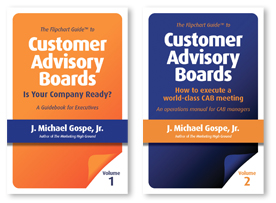Recently, a company decided to interview a few customers. They were eager to include direct, candid customer input as part of its process. They thought they would validate why they won deals; instead, they found out where and why their business was at risk.
When marketing embarked on this project, they expected to learn things about customers’ priorities and pain points, and they did. During the 30-minute interviews, they also asked for candid feedback about the company and what they could do to provide even greater value to each customer. Here, they expected to gain insight into product features, missing capabilities and future needs. But they heard none of that. Instead, they heard comments like these:
- “You don’t understand our business.”
- “It feels a little bit like we aren’t getting much attention.”
- “You are looking for new business, not helping us with ours.”
The company is a highly successful business that is enjoying significant growth even during these tough economic times. But these customers gave many clues that the company’s future success may be at risk. They want a “strategic partner” who understands their business and can bring proactive insight, observations, and recommendations to the table without having to be asked. These customers came because of a product; but they’ll stay (or leave) because of the empathy the company has with and for its customers.
How well do you understand your customers?
 Many companies have multiple activities that touch customers, but they aren’t connected in a way that allows them to see trends that affect the broader experience they deliver to customers. A simple way to gain this knowledge and therefore empathy is to establish a voice-of-the-customer program. There are three levels of customer engagement that can be typically found in such a program. Each of the three layers has a unique purpose for gathering specific types of information.
Many companies have multiple activities that touch customers, but they aren’t connected in a way that allows them to see trends that affect the broader experience they deliver to customers. A simple way to gain this knowledge and therefore empathy is to establish a voice-of-the-customer program. There are three levels of customer engagement that can be typically found in such a program. Each of the three layers has a unique purpose for gathering specific types of information.
The first layer reflects the use of feedback tools: surveys, feedback forms, message boards, or social media. After a customer purchases a product, email her a simple survey asking her why she bought from you. If and when possible, have a five-minute conversation with the buyer to ask her a few questions. Find out whom she compared you against. Online survey tools like SurveyMonkey.com are free. Others may have a small fee. These tools are easy to set up and use, cost little money, and can quickly provide you some insight. Keep the survey short and simple by asking focused questions.
The middle layer provides an opportunity for more in depth discussion and analysis via focus groups or user group meetings. The purpose here is to explore product directions. They may be conducted blind, where the attendees don’t know what company is asking the questions; or they may be company hosted. The most productive focus groups are the ones centered around customer use cases, starting with a description of a customer problem, issue or an illustration of what the customer is trying to accomplish. In other words, don’t start with feature X and ask the customer “what do you think of feature X?” Instead, set the context first. Hearing customers explain what they are doing and comparing and contrasting product alternatives, in their own words, can be eye opening.
And finally, the top of the pyramid offers a venue to explore strategic directions with senior customer executives who are responsible for planning their company’s future. Whereas product focus groups engage users and managers, a Customer Advisory Board (CAB) is a business-level focus group with senior executives. Typical CAB agenda topics will range from trends shaping the customers’ businesses, to business priorities, to shared company-customer initiatives. This representative group of customers meets once or twice during the year. Usually facilitated, these meetings are a great way to validate your company’s vision, ensuring that the product direction is in sync with your customers’ business plans and priorities. In contrast, a “Day in the Life” customer session is a type of market research program aimed at understanding one customer at a time. These are day-long interviews conducted at the customer’s location. The goal with this type of program is to observe the customer in action, learning when and how they interact with your products and services.
Must you use all these techniques to determine your best point of competitive differentiation and positioning? Not at all. Each business is unique, and depending on what knowledge you already have, you’ll know which of these techniques will be most helpful to hone your competitive differentiation.
Your customers want you to succeed
Talking with customers seems like such a simple thing to do. Yet most companies don’t take the time to do it. The momentum of the business pushes marketing projects forward. There are always tactical deadlines that take top priority, and that pushes strategic programs (like VOC) to the back burner. And besides, talking to customers may invite feedback that is difficult to take to heart. It can be a humbling experience. To be sure, your sales people talk with customers all the time. But too many marketers never get the chance (or make the opportunity) to connect with customers in real-time. Some don’t even talk to the sales staff about what they hear from customers. This is a missed opportunity that is easy to correct. Your customers will give you feedback to help you succeed. Invest in the dialog, and make listening to them a core component of your marketing strategy. It will serve you well.





